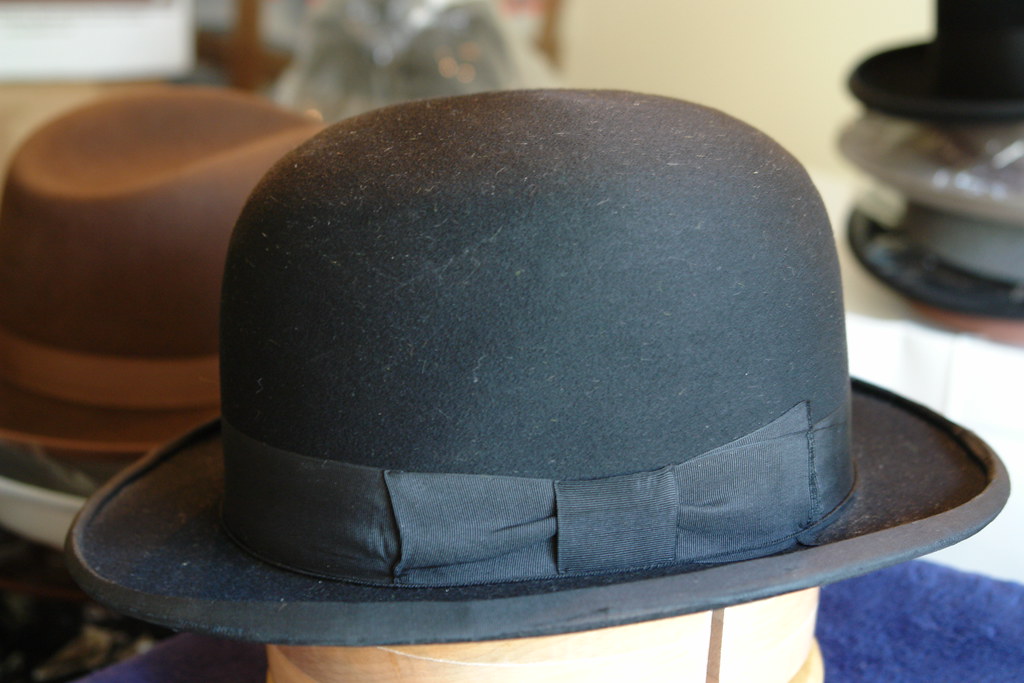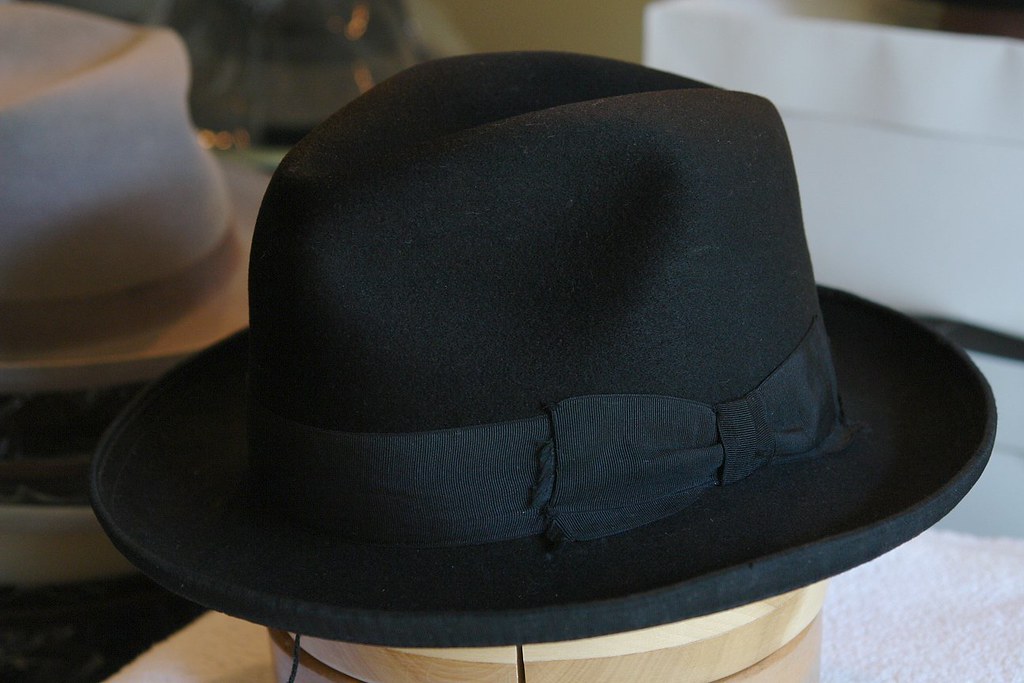- Messages
- 17,709
- Location
- Maryland
How long have you had that hat, Steve?
I have had it for about 2 years but it's from the 1930s. I have other old soft felt and stiff felt wool and wool blend hats.
How long have you had that hat, Steve?
The "secret" is, or better was, in the weaving of woll.
I'm not an expert, but I notice that the best Italian hatters are (were) in the same area where the woll was produced from many years.
Most of the rain hats I saw when I was a child (on this side of the Alps and on the others), on every men here and there, are mostly in woll - loden - melange and in every felt tissue wool is the main component. Yes there are also some fur felt hats, but they are more precious and expensive.
Fur felt is better, but not underrate the woll hats.


 John Lofgren Monkey Boots Shinki Horsebuttt - $1,136 The classic monkey boot silhouette in an incredibly rich Shinki russet horse leather.
John Lofgren Monkey Boots Shinki Horsebuttt - $1,136 The classic monkey boot silhouette in an incredibly rich Shinki russet horse leather.  Grant Stone Diesel Boot Dark Olive Chromexcel - $395 Goodyear welted, Horween Chromexcel, classic good looks.
Grant Stone Diesel Boot Dark Olive Chromexcel - $395 Goodyear welted, Horween Chromexcel, classic good looks.  Schott 568 Vandals Jacket - $1,250 The classic Perfecto motorcycle jacket, in a very special limited-edition Schott double rider style.
Schott 568 Vandals Jacket - $1,250 The classic Perfecto motorcycle jacket, in a very special limited-edition Schott double rider style. I have had it for about 2 years but it's from the 1930s. I have other old soft felt and stiff felt wool and wool blend hats.
You tell us it doesn't fit you, so I'm assuming you haven't worn it much at all. I'm left to wonder how you might know what all this hat has been through over the seven decades plus before it came your way.
Perhaps we have differing definitions of "very heavy wear," which you tell us this hat has "definitely survived."
Look, I wouldn't dispute for a moment that old hats in general were better made -- much better made, in most cases -- than the run of hats being made these days. But even the finest hats show signs of wear, provided they get worn much. Almost all of the nearly new-looking vintage hats we so covet around this place survive in that condition because they are nearly new, in that they have seen very little use, and certainly not what I would consider "very heavy wear."
I got a whole lot of hats around here. Maybe a hundred or so. That's fewer than I once had. But I regularly wear only a few of them -- and those are hats I've made, because I can always make myself another hat, but I can't make another fine, unrestored vintage hat in nearly new condition. I hate to think that an item of attire that has survived in such a fine condition for 60, 70, 80 years would get damaged after only a year or three under my stewardship.
I am not a manual laborer, but my everyday hats get worn under "real world" conditions. They see the occasional downpour, get banged into doorways, get knocked off the backs of chairs and coat trees, etc. After a year or two or three of that, they get to looking worn, inside and out. I can rebuild them, if I wish, and they come out looking new (good materials, you know -- a hat built on an all-beaver Winchester body can be overhauled and made pretty much indistinguishable from new at least a couple-three times).
I've heard claims made for beaver felt that I'm reluctant to repeat, mostly because I have yet to see empirical evidence for all its allegedly superior qualities. I can say with certainty that it can take a much finer finish than rabbit. But as to its superior durability and water repellency? It may be true. But I couldn't tell you that.
Very heavy wear, in my book, is wearing a hat in all kinds of weather -- rain, snow, blinding sunlight. And getting dirty and sweaty in it, such that the hat develops a black, greasy, deposit at the bandline. That tarry stuff is indeed a mixture of sweat and dust. (Gross, eh?) Such a hat can be cleaned up, usually. It involves stripping the body bare and very probably replacing the sweatband and the ribbon and patiently, repeatedly soaking and scrubbing the body until all that funk is gone. Would a wool body hold up to that? Beats me. Depends on the wool body, I suppose. But I'd tell a person with a wool felt cowboy hat in such a condition that unless that hat holds some sentimental value, it probably wouldn't be worth all that trouble and expense.
In vintage hats, the use of wool is intriguing. I have several that were blends produced during and right after the second world war when scarcity of supplies both domestic and imported forced innovation. I have one high end western that has vicuna added to beaver fur (amount unknown) which adds a special softness to the very fine felt finish.
My .02 would be that in contemporary merchandise, wool is good in cloth hats and berets, but in fedoras, should be avoided.
I think it's apparent this hat was worn heavily. Many of the old hats I get from Central Europe have seen tough times. I am sure it would stand up to repeated soaking and scrubbing (if definitely) needs it. I don't particular like the feel of the hat but it is very durable. How many old German or Austrian wool or wool blend hats (stiff or soft) have you held in your hands? Have you read any documentation on the subject?
Beaver fur has a great ability to felt but it doesn't always best for desired finish. I have posted a lot of documentation from German and Austrian sources on felt content and processing. Have you looked at any of it?
Oh please, Steve. I'm confident you are well read on old European hats. It's your area of expertise. But it doesn't take a trip to the library to know that that hat hasn't seen all that much use. Can you document that it has? Sure, the liner is dirty. I have hats a couple-three or four years old with dirty liners. BFD.
